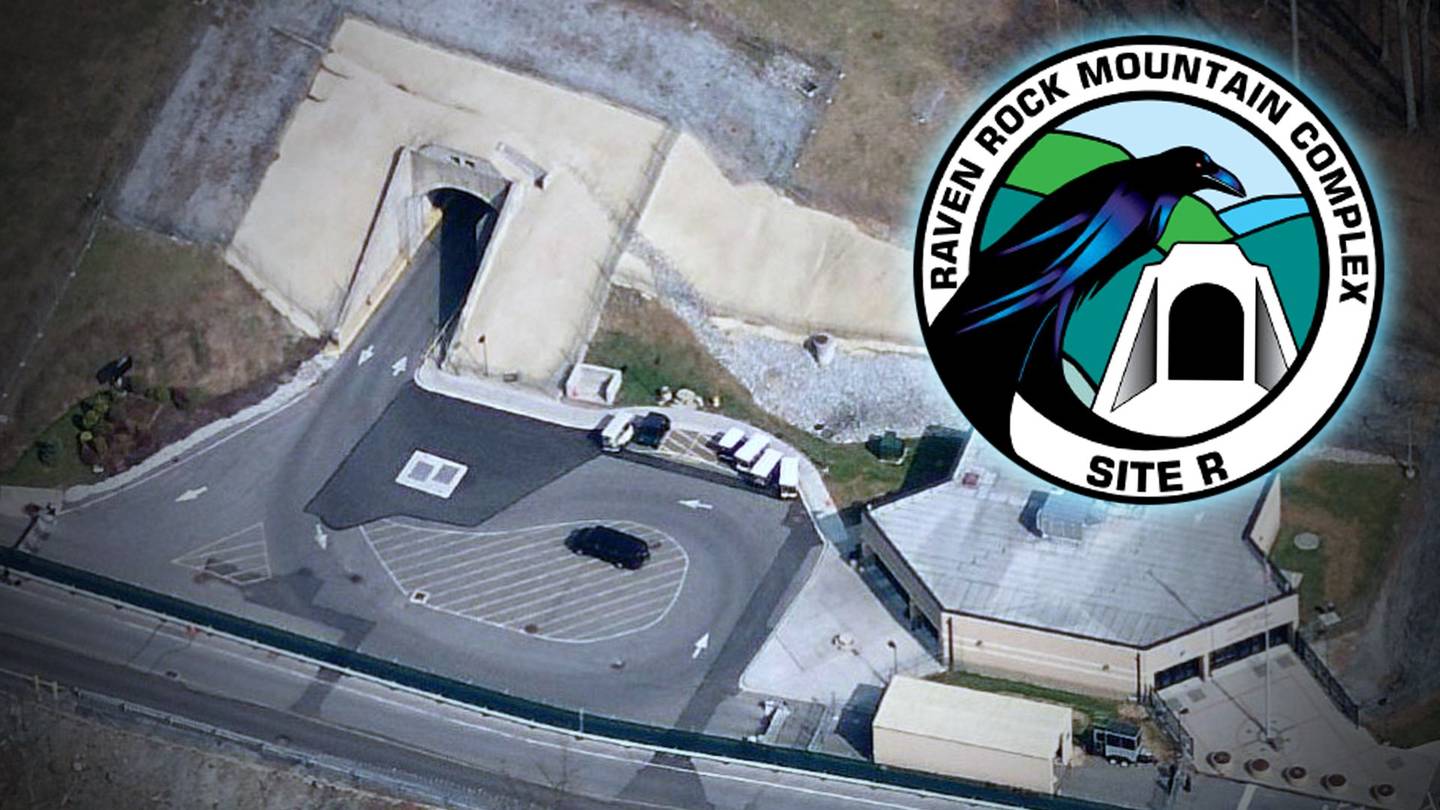
The War Zone had a long discussion with Garrett Graff, the author of the fascinating new book, Raven Rock: The U.S. Government's Secret Plan To Save Itself While The Rest Of Us Die. We talked about everything from secret bunkers to how nukes spawned that development of modern communications, and of course all about government after America as we know it has been turned to ashes. It was a lively, eye opening, and bizarre discussion to say the least—just as one should expect when discussing the fine details of America's shadowy continuity of government plans.
Starting in the mid 1940s, a change swept across America and the world that catalyzed the growth of a massive and unprecedented security apparatus. Can you explain a bit about what continuity government is and where it springs from?
It's the term of art for a whole series of plans that grew up over the course of the Cold War, beginning during the Truman years that focused on how nuclear war would unfold, who would be involved, and then what would happen to America in the hours, days and weeks afterwards. And these plans focused not just on, you know, the officials and how they would be evacuated, and where they would be evacuated, but also what parts of the US government would continue, and how the country would try to rebuild and reconstruct and sort of reconnect with whatever citizenry and whatever was left of the country after a nuclear war.
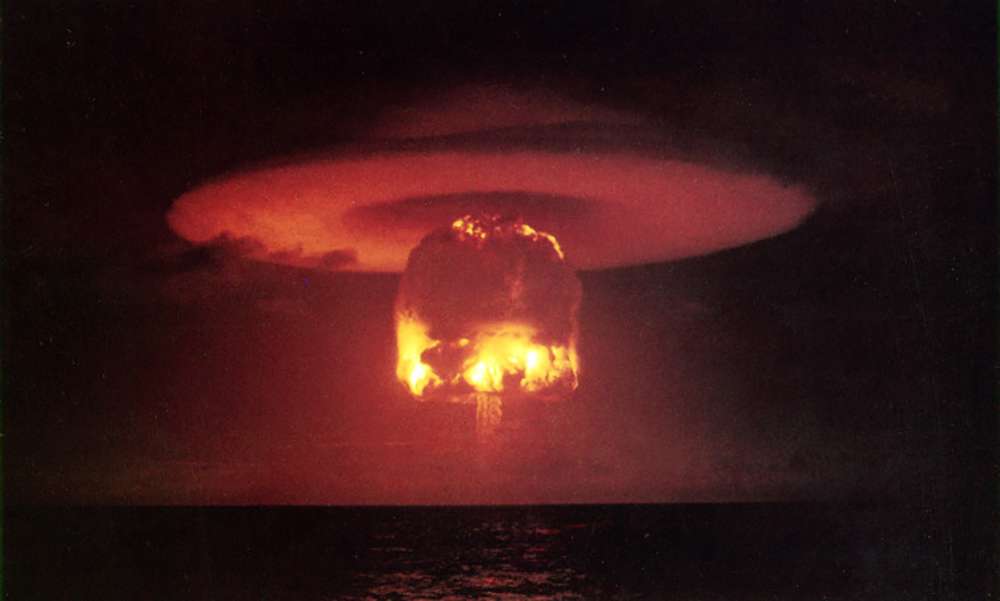
DOE
This came about after the first atomic bomb was dropped, and the onset of the realities of the atomic age. Before that, as you describe in your book, Truman could just walk across the street without a security detail. And then the atomic bomb became a reality, and things began to change.
Really, this book is the story of an unfolding technology revolution, and how nuclear weapons reshaped and created the modern presidency. Because they did two things. First was the president and other government officials needed to be in command and control and communication at all times. You couldn't have people lose touch for an hour or two, or even a day or two at a time. And that was a huge transition for the presidency, where in the 1800s and early 1900s you would have presidents take off from Washington for weeks or months at a time to travel around the country with very little command and control back in Washington.
Then once nuclear weapons arrived and then got stronger and then more plentiful, you had the beginning of the idea that entire cities could be wiped off the face of the planet with just a few hours notice at first, and then, by the end of the Cold War, with just a few minutes notice.
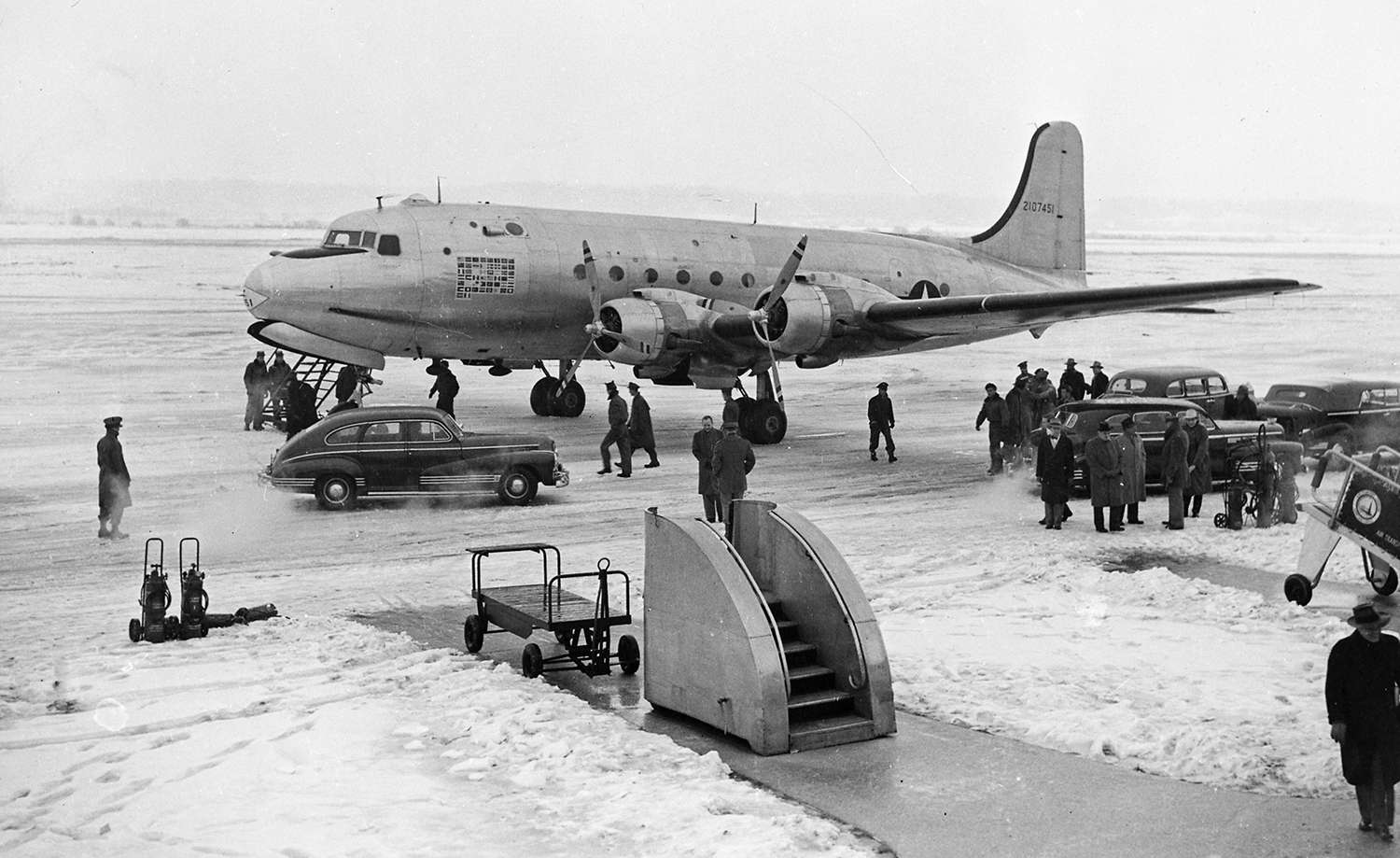
National Archives
Truman's VC-54C “Sacred Cow” airplane awaits at Washington National Airport in December of 1945.
Over the course of the Cold War, the U.S. government built a massive crescent of continuity of government facilities or sorts. These included elaborate communication sites, personnel bunkers, and command and control posts, ranging from southern Pennsylvania all the way to North Carolina. What are some of these shadowy facilities and how does Raven Rock, which is also the name of your book, fit into this invisible constellation of fortresses that dot America's east.
Raven Rock, the name of the book, comes from the government's main bunker, just over the Pennsylvania state line, near Camp David. That was going to be the alternate Pentagon, the place where the US military would have relocated in the event of an attack, or the threat of an attack, on Washington.
But Raven Rock, which is this enormous city within a mountain, could hold about five thousand people and is still in operation today, 24 hours a day, 365 days a year. It is just one of scores of these bunkers in relocation facilities scattered around, as you say, what was known as the "relocation arc," this large stretch from Pennsylvania on down through Maryland, Virginia, West Virginia, and then even down into North Carolina. And it included lots of bunkers, but also some more unhardened nuclear relocation facilities.
The state department set up its operations at a large farm. A beef cattle research farm in Virginia. And the US Information Agency built a massive radio transmitter facility down in North Carolina. The Supreme Court would have actually relocated to a mountain resort in Asheville, North Carolina, where they would've held court sessions in one of the reception halls.
And the bunkers, there were more than a hundred of them at the peak, one for almost every key government agency, and one for almost every cabinet department, with the big ones at Raven Rock, and then Mount Weather, which is where the president and his cabinet officials would have gone. Mount Weather is also still in operation today. And then the Greenbrier in West Virginia, which is where congress would have gone to a bunker that was hidden under a luxury resort in White Sulphur Springs.
We know some of these facilities still exist today, and that some of them don't. Are there other ones that are out there that we still have no idea about, such as where they are or what they do?
Absolutely. Many of these facilities were shut down in the wake of the Cold War, but many still exist in all corners of the country. FEMA runs all of these continuity government programs—many people don't know that—and has a whole series of regional command bunkers around the country in places like Texas, Maryland, and Massachusetts.
And then there are bunkers like NORAD, which was made famous by the movie War Games in the 1980s. That bunker was originally shut down in the early 2000s and has actually been re-opened and re-activated in recent years in order to combat the possibility of a cyber attack, or an attack by a rogue nation.
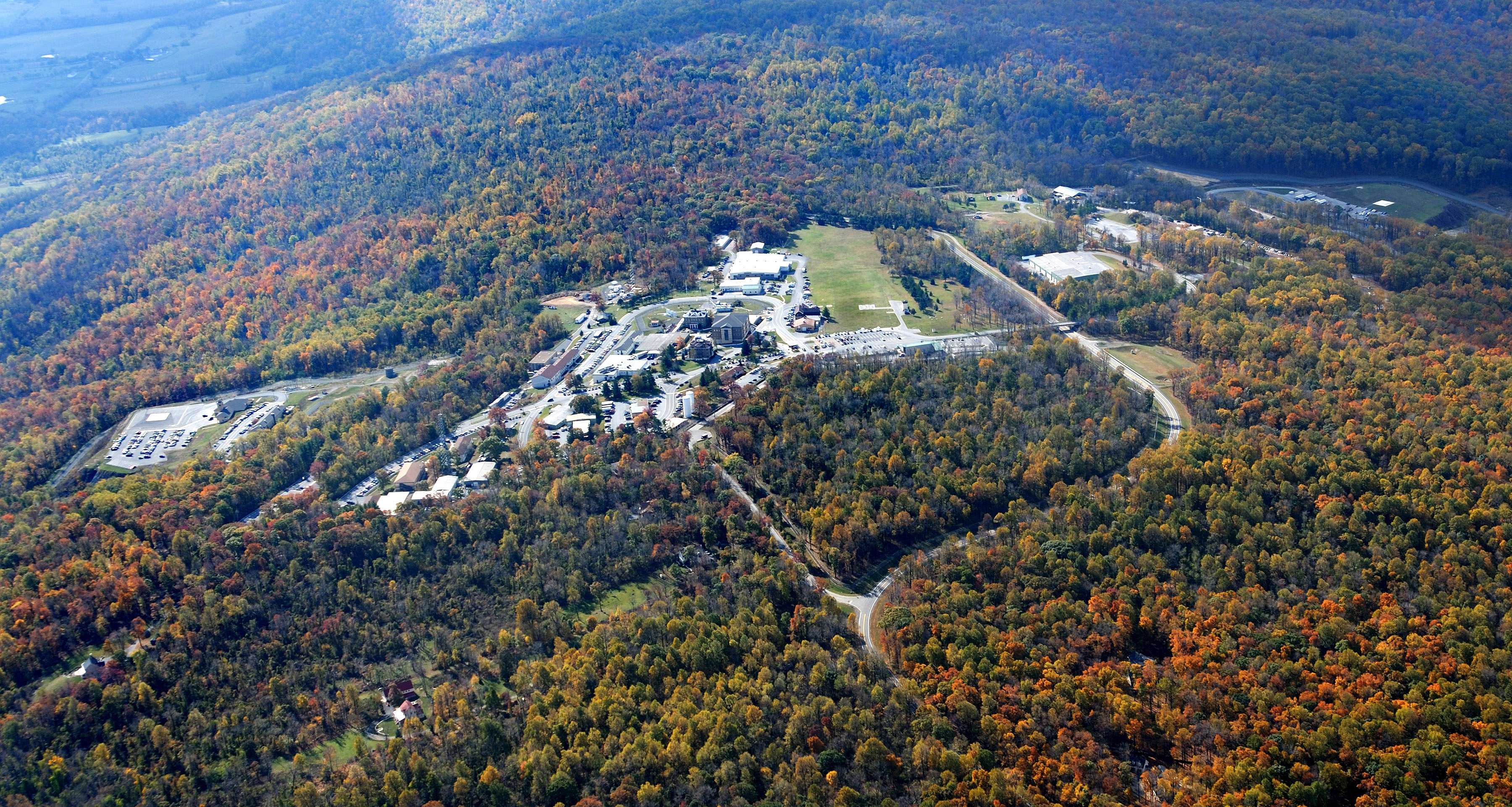
FEMA
FEMA's Mount Weather facility. A small city lays deep below carved into large granite caverns.
Beyond the secret bunkers and Cold War intrigue, your book is really as much a story of about the development of modern communications as anything else. The ability to reliably communicate was probably more important than any other factor when it came to building a credible nuclear deterrent, and pursuing the idea of continuity government. How did the nuclear age spawn great leaps in communications?
This is part of what I found really fascinating in researching this book, is understanding how nuclear war, which obviously, at least yet, has never happened, in many ways created the modern world that we interact with on a daily basis. I mean, the Interstate Highway System was in many ways a creation of the Eisenhower era's needs to try to ensure an easy evacuation from the center of urban areas, and the ability to speed war materiel around the country in the event of an attack.
And then the internet itself grew out of the Pentagon's desire to have a decentralized communication system that could survive a nuclear war. This sort of fundamental tool of modern life really grew out of doomsday planning. In fact, the very technology we use whenever we go online to book an airplane ticket through Kayak or Orbitz, actually is just a descendant of the original air defense system built to track Soviet bombers coming towards the United States. And every chat program that we use in daily life—from Slack to Facebook Messenger—is a descendant of the first chat program which was used to help these emergency bunkers communicate during a national crisis.
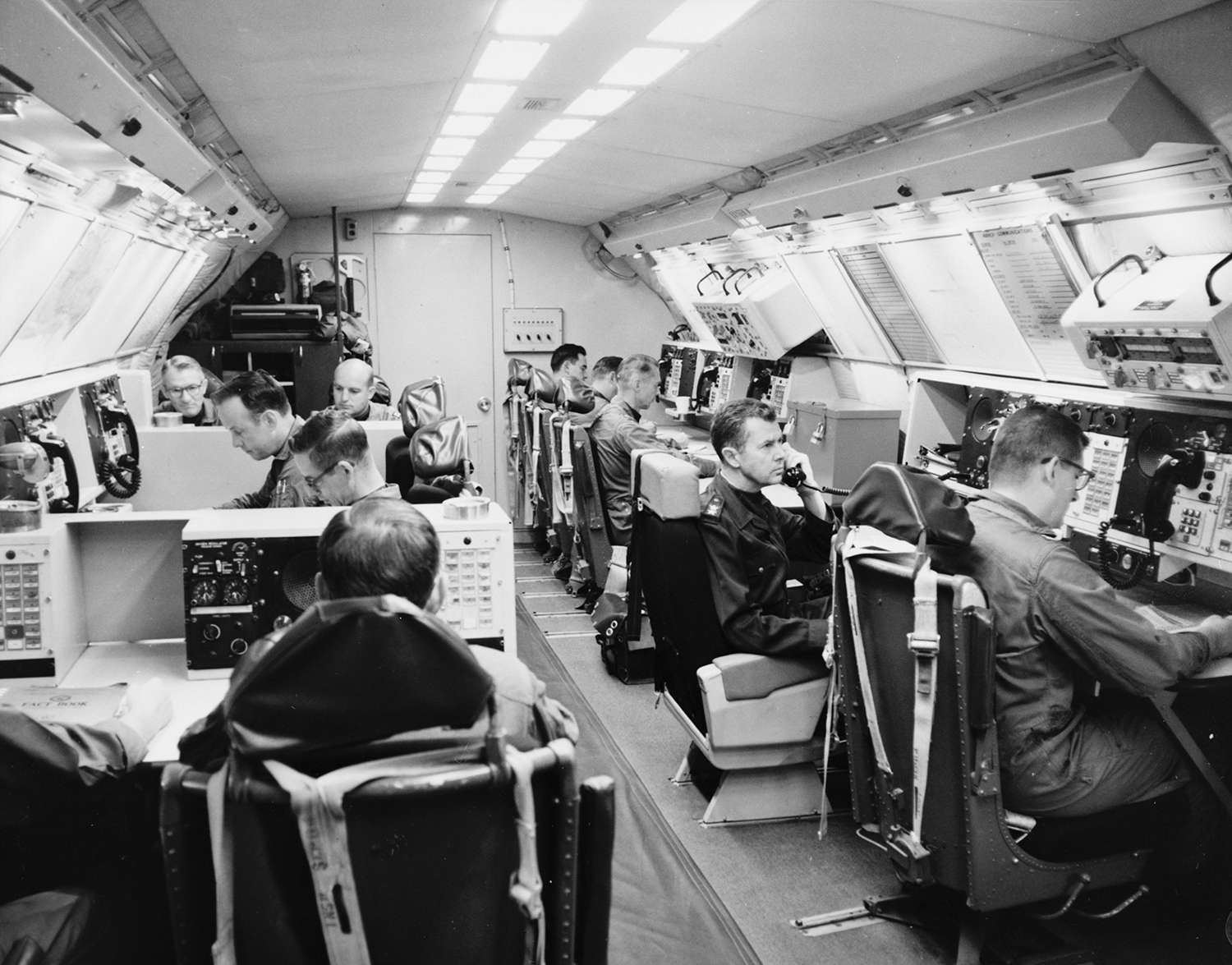
USAF
Inside an EC-135 Looking Glass aircraft in 1979. For over 29 years, a Looking Glass aircraft was airborne at all times. Major revolutions in communications technology occurred out of a need to maintain command and control during and after a nuclear exchange.
Some of the continuity of government and civil defense plans you describe are totally bizarre, like harvesting pets for protein. What are some of the wildest parts of this type of planning you've found?
Every government agency had its own post nuclear functions. The post office was in charge of registering the dead and figuring out who was still alive. The National Park Service would help run the refugee camps, because the thinking was the national parks wouldn't have been targeted in a nuclear strike.
When you begin to talk about how to preserve the US government, you ask this very existential question of What is American? Are you trying to preserve the presidency? Are you trying to preserve the three branches of government? Or are you trying to preserve the historical totems and artifacts of our that sort of unite our country?
The National Archives sat down and decided that they were going to save the Declaration of Independence before they save the Constitution. The Library of Congress sat down and decided that they were going to save the Gettysburg Address before they save the George Washington Military Commission.
There was even a specially trained team of park rangers in Philadelphia whose job it was, during the Cold War, to evacuate The Liberty Bell in the event of a Soviet attack. And so this question about how do you save and preserve and restart America ends up being a deeply philosophical one, in addition to the very basic question of, you know, how do you actually just save and preserve the individual elected officials who lead the country?
Is there a continuity of government scenario following a massive nuclear attack that won't lead to some sort of dictatorship, even if it's a temporary one?
Part of what's striking is the extent to which the people who really got involved in this planning, effectively said, during the Cold War—and even after 9/11—that to the extent that the US government actually implemented any of these plans, it would generally involve suspending normal peacetime civil liberties, and it would generally involve effectively declaring some form of martial law.
Is there a continuity of government scenario following a massive nuclear attack that won't lead to some sort of dictatorship, even if it's a temporary one?
Part of what's striking is the extent to which the people who really got involved in this planning, effectively said, during the Cold War—and even after 9/11—that to the extent that the US government actually implemented any of these plans, it would generally involve suspending normal peacetime civil liberties, and it would generally involve effectively declaring some form of martial law.
There was the nuclear bomber age, where we had hours of warning before an attack. It seemed almost survivable as there was time to prepare, and even a credible air defense system in place to deal with some of those aircraft. Then we hit the advent of the intercontinental ballistic missile (ICBM) and everything changed. How did continuity of government planning change once the ICBM came on the scene?
In the early years, atomic war was something that seemed potentially survivable, that you would have a long warning time before bombers could arrive. The first atomic bombs were powerful, but not unthinkably powerful, and then they're also just weren't that many atomic bombs in the early years of the Cold War.
Then all three of those things changed over the course of the Cold War, where you have ICBMs introduced, which cut that warning time down from about eight hours to 15 to 30 minutes. You have the arrival of thermonuclear bombs built to deliver unimaginable destruction on an urban area. And then just the sheer volume and plentifulness of atomic weapons and thermonuclear weapons reach a point where the idea of war was just insane, which is how you got to the eventual theory of mutually assured destruction.
So over the course of that arc you see the US government's hopes and dreams shift and shrink from being able to actually protect a large chunk of the civilian population, in the 1950s and early 1960s, until what you basically have show up later in the Cold War, when effectively the American people were going to be left totally on their own. And if we were lucky a small number of senior government officials were going to be able to evacuated to safety.
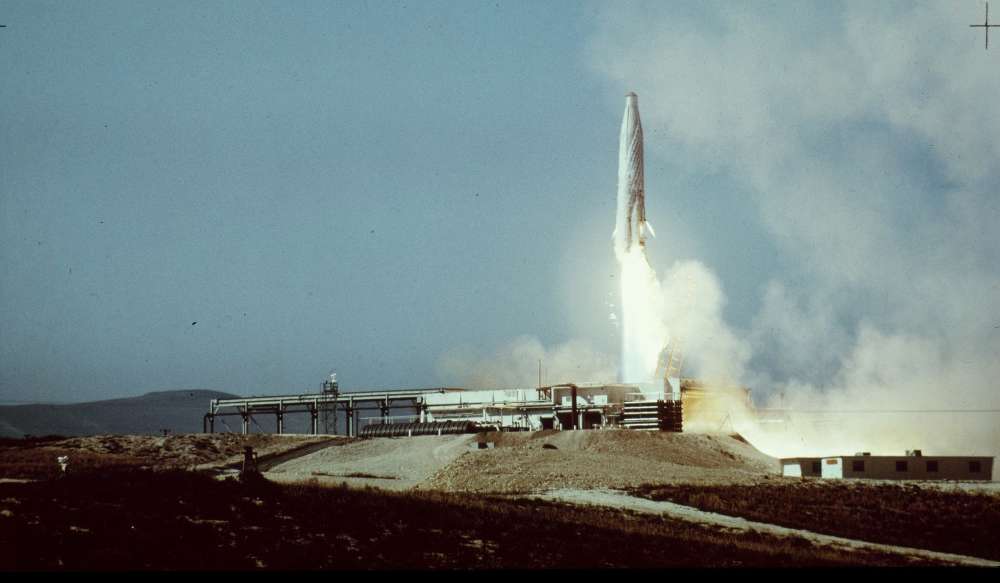
DoD
An Atlas ICBM launch.
Wouldn't Congress and the Supreme Court be nearly irrelevant after a major nuclear attack?
Yes, absolutely. You sort of saw these plans shrink over the course of the Cold War to something that I describe as basically trying to preserve the spirit of the Constitution, but not the letter of the Constitution.
Congress really understood that it was going to be pretty irrelevant in the immediate aftermath of a nuclear war. And that the Supreme Court was going to be entirely irrelevant for months after a nuclear attack, and their plans to preserve and protect those officials sort of shrank away and even disappeared. And the modern incarnation of these plans, which are known as enduring a constitutional government, remain the most secret of all of the continuity of government plans in modern life. We don't really know how they preserve or cease to preserve the three branch structure that we're used to in peacetime.
But what we've guessed based on publicly available information is they will probably provide super-empowered powers to a small group of congressional members—perhaps as few as two to four to eight of them—who are able to sort of serve as a "rump congress" until congress is actually able to reconstitute itself at some point in the future.
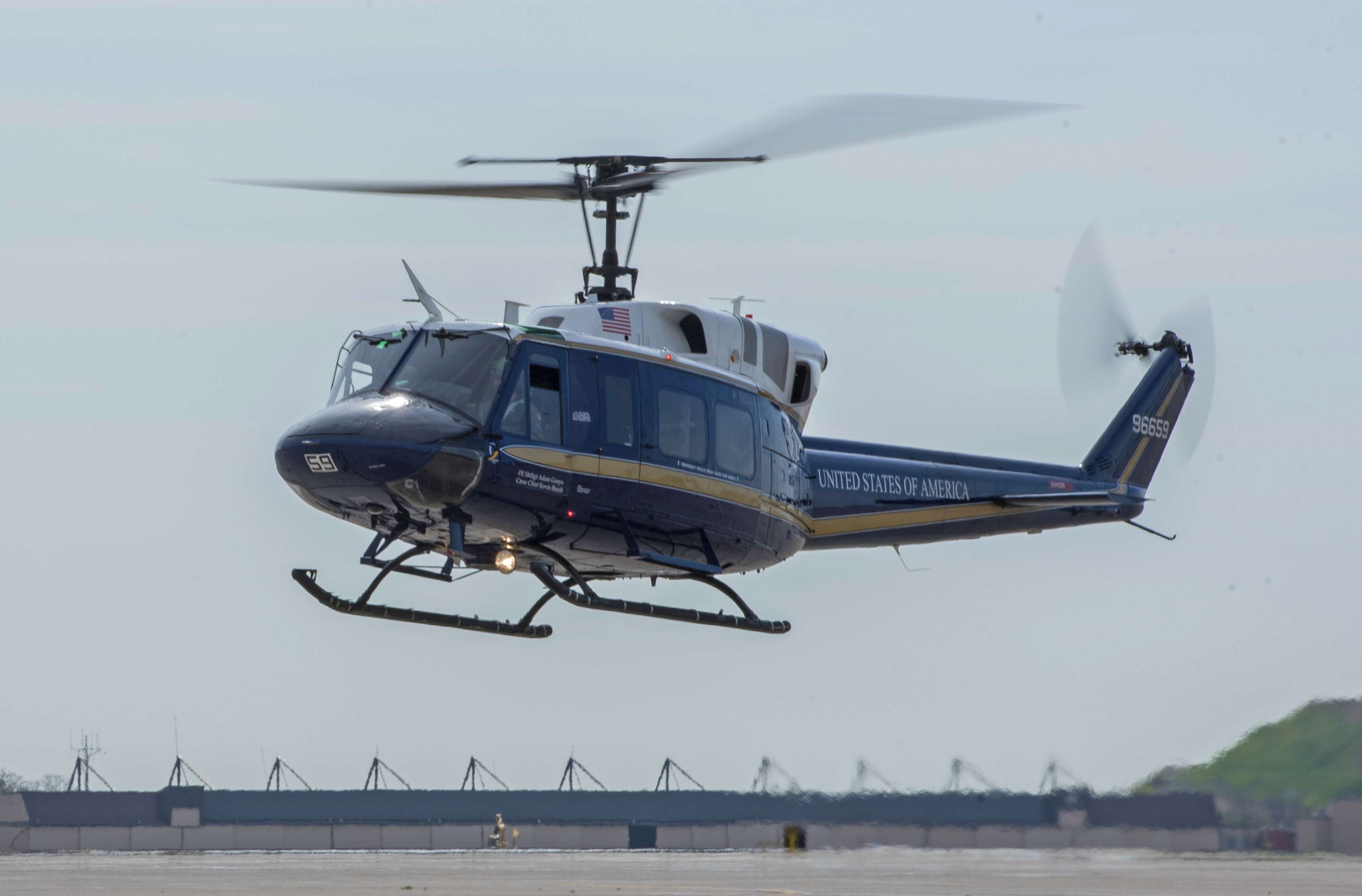
USAF
The 1st Helicopter Squadron with their vintage Twin Hueys is one of a handful of special helicopter units tasked with scooping up key individuals and evacuating them to bunkers throughout the region. Whether or not these aircraft could actually get to any of these select power players before the nuclear warheads arrive is highly questionable, but a standby VH-3D or VH-60N from HMX-1 may be able to grab the President or the Vice President in time.
Some of our leaders were seemingly more realistic about what nuclear war would actually look like, and the results of it, than others. Eisenhower stated that after a nuclear exchange there wouldn't be enough bulldozers to scrape the bodies off the streets. Now that's a pretty eye opening statement. How did different Commanders In Chief generally look at continuity of government, and which do you think had the best handle on it?
I think actually what's interesting about this is the extent to which planning for doomsday, and planning for nuclear war, really shaped the way the presidents thought about nuclear war. And the extent to which you really saw officials at the top of government, including almost every president of the Cold War, go through these doomsday exercises—these nuclear war exercises aboard a nuclear doomsday airborne command post or in one of these bunkers, and conduct an evacuation drill and nuclear war exercises, and just how worrying those exercises were for the Commanders In Chief.
You see it with Eisenhower, Kennedy, Johnson, Nixon, Carter and Reagan. And for each of them, they really thought long and hard about nuclear war in the context of thinking through these doomsday plans. And I think that the exercise and that experience helped shape their decision making during some key Cold War crises—when they all took steps back from the precipice, rather than push forward into war.
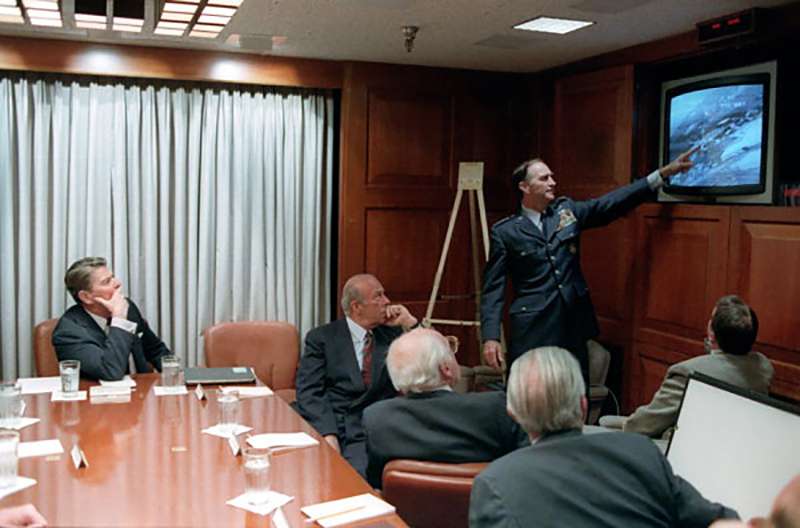
National Archives
Ronald Reagan in the situation room.
Does it worry you that there are a lot of reports stating President Trump doesn't seem very interested in details like this? This is reportedly the case across the full range of the government, and he has supposedly delegated decision making authority to the military on a fairly unprecedented level, at least in modern times.
Yes. And I think that you have a president also who has made very troubling comments about his own appreciation of nuclear weapons, and the extent to which he would like to see nuclear weapons spread in the world. Which goes against decades of US policies to try and limit nuclear proliferation around the world.
Does a more perceptually effective continuity of government plan, including elaborate infrastructure like massive bunkers, fleets of evacuation helicopters, and airborne command posts, where government officials, and even their families in certain cases, might be able to survive a nuclear change, make an exchange or getting involved in nuclear conflict more acceptable or attractive in any way?
Well, I think we have seen that a lot of emphasis since 9/11, really since the 1990s, but definitely since 9/11, has been put on the idea of devolving control of the US government. Which is this idea that we may be less likely today to face an all out global thermonuclear war with Russia, that blankets the entire country, but that we are more at risk of today's threats from a terrorist group or from a rogue state like Iran or North Korea. And these threats may manifest themselves in a surprise attack that wipes out a major US city like Washington DC. And then how do you devolve power within the US government to people who exist outside of Washington on a regular basis. And that's one of the reasons that all of these bunkers are to this day fully staffed, 24 hours a day, 365 days a year. Like Raven Rock, and Mount Weather, and others around the country.
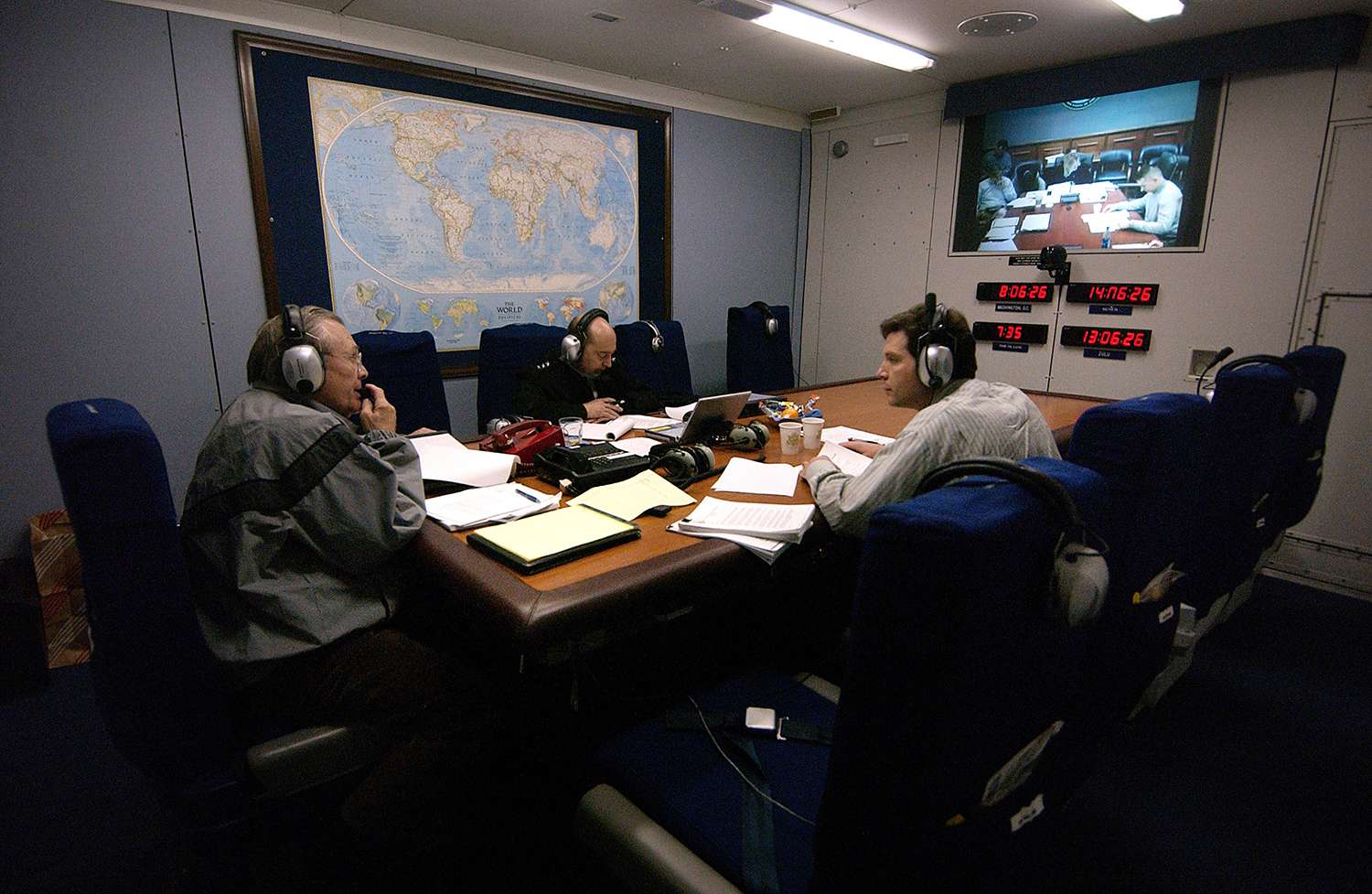
DoD
SecDef Donald Rumsfeld aboard an E-4B National Airborne Operations Center in 2005. The aircraft, which were designed in the '70s specifically as a survivable command and control platform for a doomsday scenario, now have other roles as well, including acting as a command post and communications relay system for FEMA during a national disaster and carrying the Secretary of Defense on trips abroad. The aging E-4B fleet was going to be retired under Rumsfeld without a replacement, but the plan was stopped and they have since received drastic upgrades.
That sounds more like planning based on a shadow government of sorts, or maybe a stand-in government as opposed to relying on traditional evacuation plans alone, correct?
Yes. I mean that's sort of a very exclusive part of this. Most Americans think that the president is just a person that we elect every four years. In the modern age, the presidency actually encompasses several hundred people where you have a line of succession. The vice president, speaker of the house, president pro tem of the senate, and then all of the cabinet officials. But then each of those cabinet officials also have their own line of succession of 12, 15, 20 people or more. And so when you sort of think about that emergency government that might emerge after an attack on Washington, you're talking about a cadre of several hundred people who are all part of these lines of succession, and would be in line to be evacuated to different facilities depending on their rank, and would be stepping into these roles after after an attack.
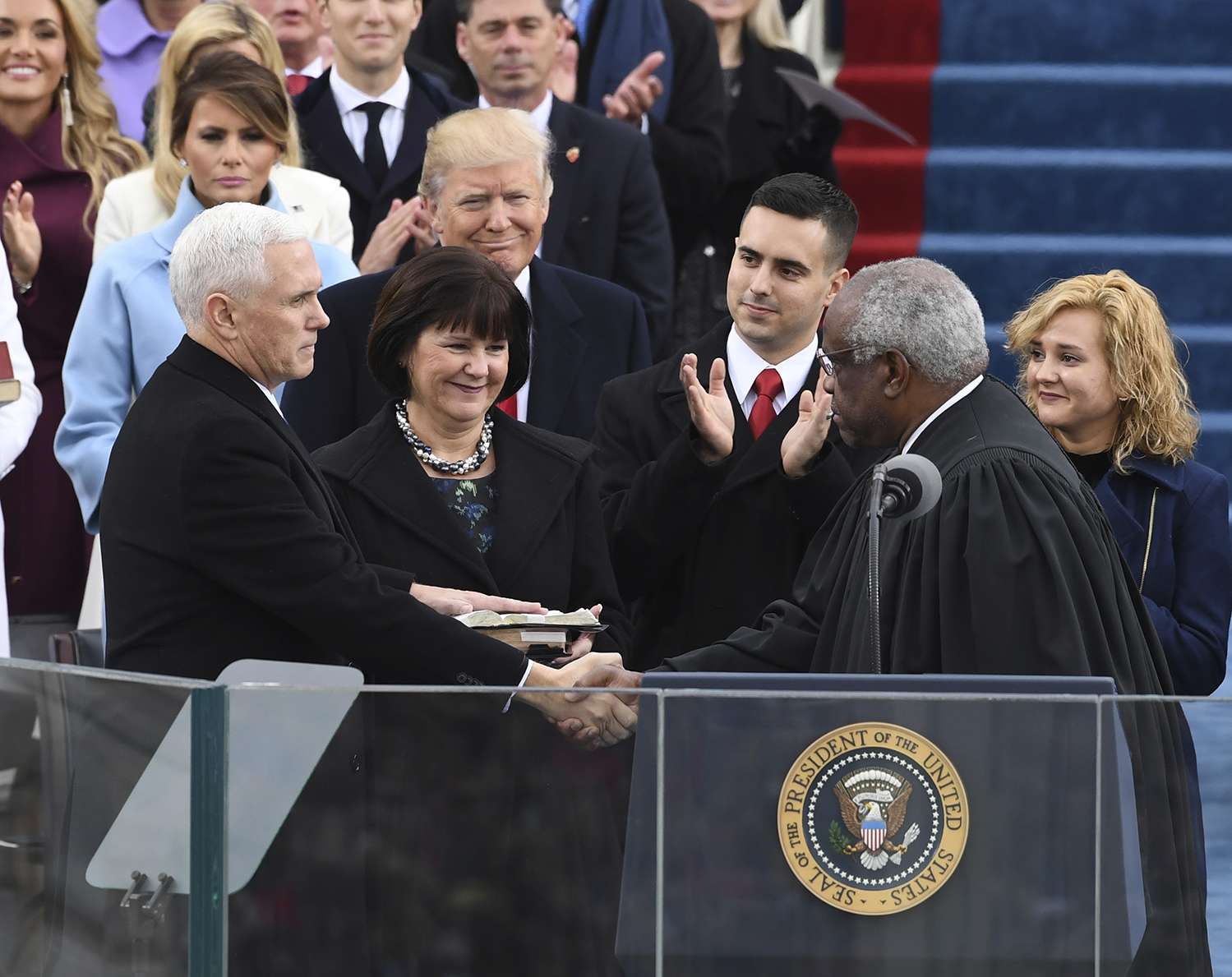
AP
During Donald Trump's inauguration, outgoing Homeland Security Secretary Jeh Johnson was the designated survivor that would assume the presidency if say Washington DC were nuked in a surprise attack. Shulkin was taken to a secure location and had a security detail assigned to him, as well as a military attaché carrying the dreaded "nuclear football" just in case.
After over a half century of planning and ungodly sums of money spent preparing for what comes after the country is basically destroyed, that massive apparatus failed miserably on 9/11. What went wrong that day and how did it change the way we plan for doomsday and other major disasters?
9/11 is the only time that most of these plans have ever been activated on any sort of large scale. They just fall apart entirely, and they fell apart for some predictable reasons. It turned out that Washington, DC had a lot of traffic, and that they were sort of gridlocked trying to get officials outside of Washington. And they fell apart because on any given day you have a lot of government officials traveling. And so you have a lot of senior government officials who were in different places doing different things and it was hard to track them down.
And then what we also saw was the tension that had existed in continuity planning all along, which is you can't generally keep someone safe and keep them in communication at the same time. So you have a lot of officials that were being evacuated, including the President of the United States, who was in Florida and was put aboard Air Force One and sent up into the sky, and were really struggling to stay in communication with anyone on the ground and to stay abreast of a rapidly unfolding situation.
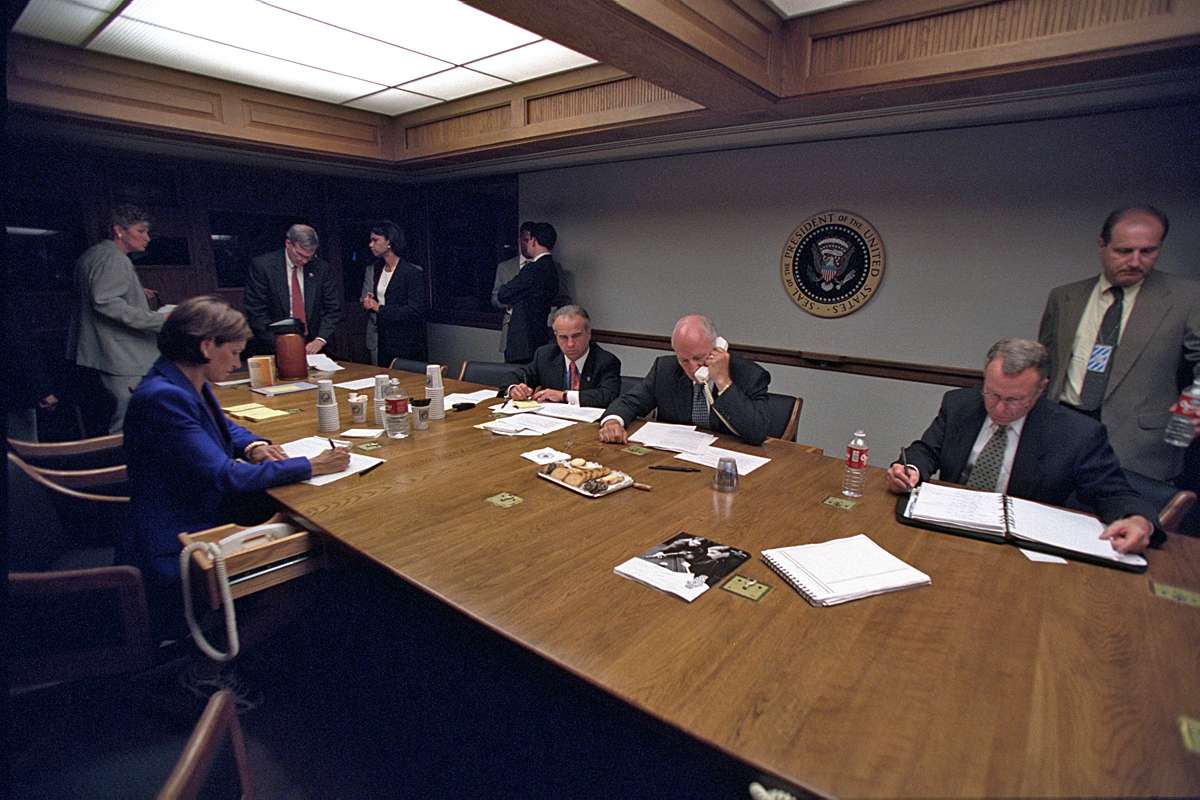
AP
Vice President Dick Cheney and members of the Bush administration cabinet were relegated to hiding in the White House bunker on 9/11. The facility proved to be woefully inadequate for the job at hand, as were strategic communications on that terrible day. The White House bunker has since been totally revamped and expanded under a secretive project that saw large swathes of the White House lawn dug up for a long period of time. The White House bunker is not the Situation Room.
We know that Air Force One has far better communications than it did on 9/11, and there have been upgrades to the Situation Room and the White House Bunker, and so on. Are there other much larger systemic changes that were made following 9/11 to improve America's continuity of government plans and to fix the issues that were exposed by 9/11?
Certainly some changes have been made. Communications today are vastly better than they were. You see a lot of improvement in the readiness and preparedness of places like Raven Rock, NORAD, and Mount Weather in terms of what they are capable of and how there is staff there on a daily basis. But at the same time, you know, part of the challenge with all of these plans is that as in any attack or in any war, you can make very, very detailed neat and clean looking plans on paper, but in reality they are going to unfold in chaotic ways that make it very hard to understand what might actually transpire.
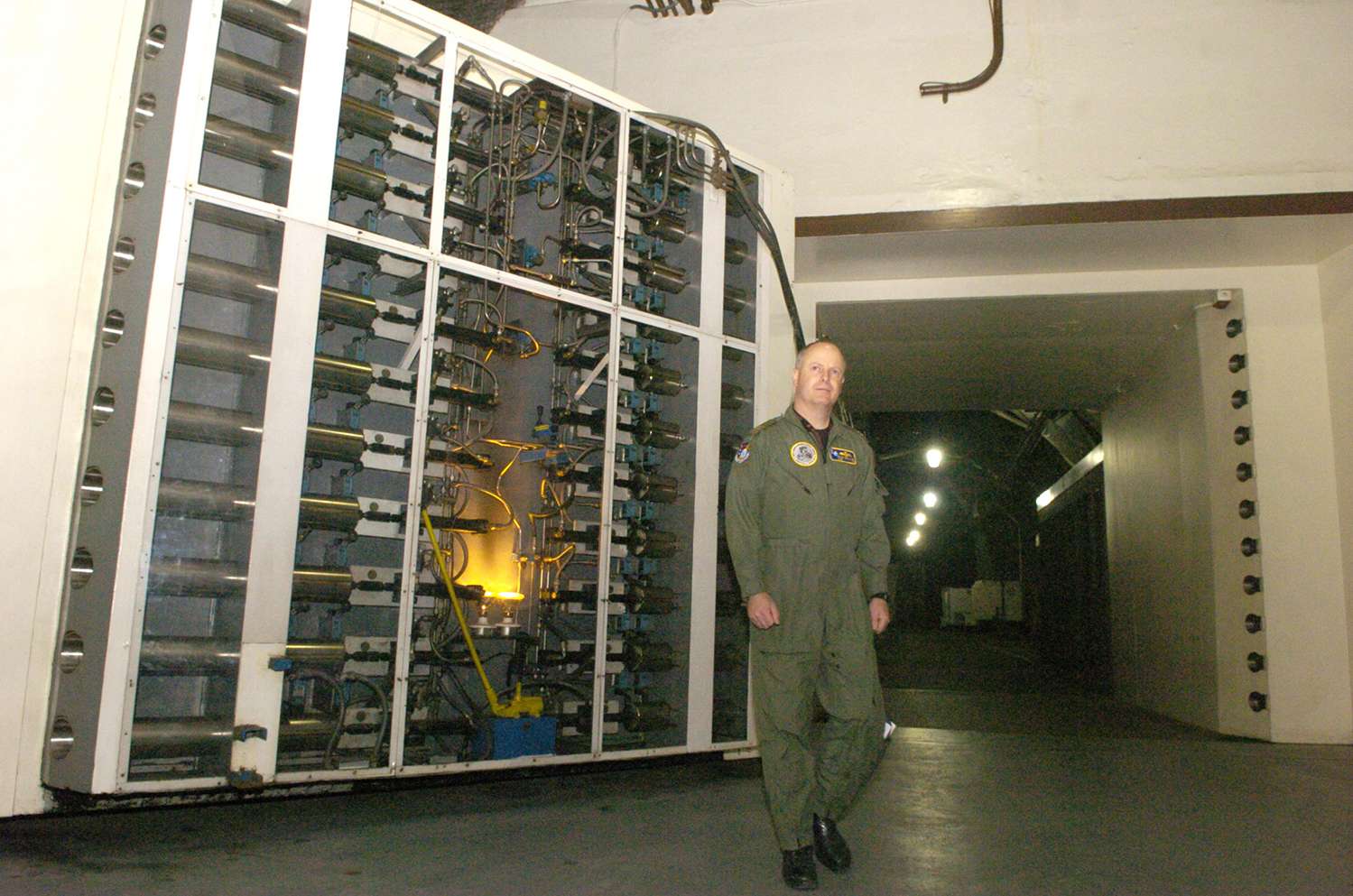
AP
NORAD's complex built into Cheyenne Mountain has 25 ton blast doors at its entrances. The site was reactivated in 2015 after a stint of being kept on standby.
Your book describes such a massive and bewilderingly costly apparatus built up around the continuity of government concept. Is continuity of government planning really just a giant form of mental masturbation? Not even our most capable bunkers can sustain direct hits from thermonuclear weapons and it seem like all the planning would likely fail to hold up to the realities of a major nuclear exchange. One could argue that the whole idea has become a manifestation of the "self-licking ice cream cone" that is the defense-industrial complex more than anything else. I mean is this worth investing in at all?
Certainly many of these plans would have never worked anywhere close to the way that one would expect them to on paper. But at the same time, you know, I think there is value in thinking through some of these questions. Because of just how awful any sort of large-scale attack is going to be, you want to make sure you have a plan, and as best a chance as you can have of ensuring that something is left to rebuild the country.
Russia has its own form of continuity government plans. We saw them at work during a 2016 drill where tens of millions of people were involved. In Moscow alone, millions were put into shelters below the city. And generally the Russians seem to have adopted a different viewpoint on all this where saving the citizenry is a focal tenet of their doomsday planning. How are Russia's plans different than America's, and do they know something we don't know?
You know, this was sort of a hard thing to parse all through the Cold War—whether the Soviet Union actually had a better civil defense strategy than we did. You know that famous scene in Doctor Strangelove, where they're debating and worrying and fretting over the possibility of "mineshaft gap?" Actually, the US government was afraid of a mineshaft gap during the Cold War. And that we were afraid of Russia's civil defense ability. We were literally out there mapping abandoned mine shafts and caves around the country for possible fall-out shelters for the civilian population, and our government leaders.
You wrote about how the US had terrible problems with their command and control computer systems during the Cold War. One of the scenarios you outlined was the fault of a bad 46 cent circuit that made NORAD think armageddon was on its way in the form of a barrage of Russian ICBMs. Considering we supposedly had some sort of computer edge over the Russians during that period of time, are you surprised that the Soviet Union didn't have similar issues, and that those issues didn't lead to a nuclear exchange of some sort?
Yeah, and to me that was a very humbling part of researching the Cold War—going back and understanding just how miraculous it was that we escaped without major incident. Because there are plenty of times during the Cold War where war would have been the more likely, and perhaps even more politically expedient, option for leaders on both sides.
You know, when Eisenhower left government, he said the thing that he was most proud of was keeping the peace, and that it didn't just happen. And I think that one of the lessons, when you go back and you read these histories, and really understand the extent to which some of these scenarios could have spiraled out of control very quickly, you come to understand, just how lucky we are that we had such good leaders during the Cold War.

US Library of Congress
SAC headquarters in Omaha, Nebraska ran on some ancient computer technology. Here you see the "big board" in all its glory.
In Raven Rock, you touched frequently on some past elements of emergency planning that sound like the domain of the conspiracy theory crowd, but it was all too true. Primarily I am talking about concentration-like camps. For instance, you mention orders for citizens to be told to register at a local Walmart and to shelter there with thousands of other people—with plans that call for those people to sleep head-to-toe in unrealistically neat rows and that these facilities have far too few bathrooms to support such a plan in the first place. You also talk about the rounding up foreigners and the FBI being sent to go grab targeted individuals during a national emergency or nuclear attack situation. What do you think the continuity government plans today have in them that would probably be alarming for most people to hear?
Well, I think that most of these plans still exist in some modern form. You know, we don't really have any sense of what it means to have these continuity of government plans for the three branches of government in modern times. We don't really know what role Congress would do after an attack. We don't know if the Supreme Court would have any role whatsoever. And what I think almost everyone understands, is that after a nuclear attack, the President of the United States would be effectively a dictator for some period of time, until we were able to restore something that was a kin to the constitution that we normally expect.
You wrote about how it was a common occurrence during high-level nuclear exercises that the guy playing the president wouldn't press the button to launch the nukes even though it was clearly a simulated event. Is this an indicator that if it really came down to it, even the actual president wouldn't be able to initiate a nuclear counterstrike?
Yeah, and I think that's one of the things that is really sobering about this is realizing how much people struggled, even in exercises, to consider launching a simulated nuclear weapon. And whether or not at the end of the day, even if one side or another did launch some weapons, whether the other side would've ever actually retaliated.
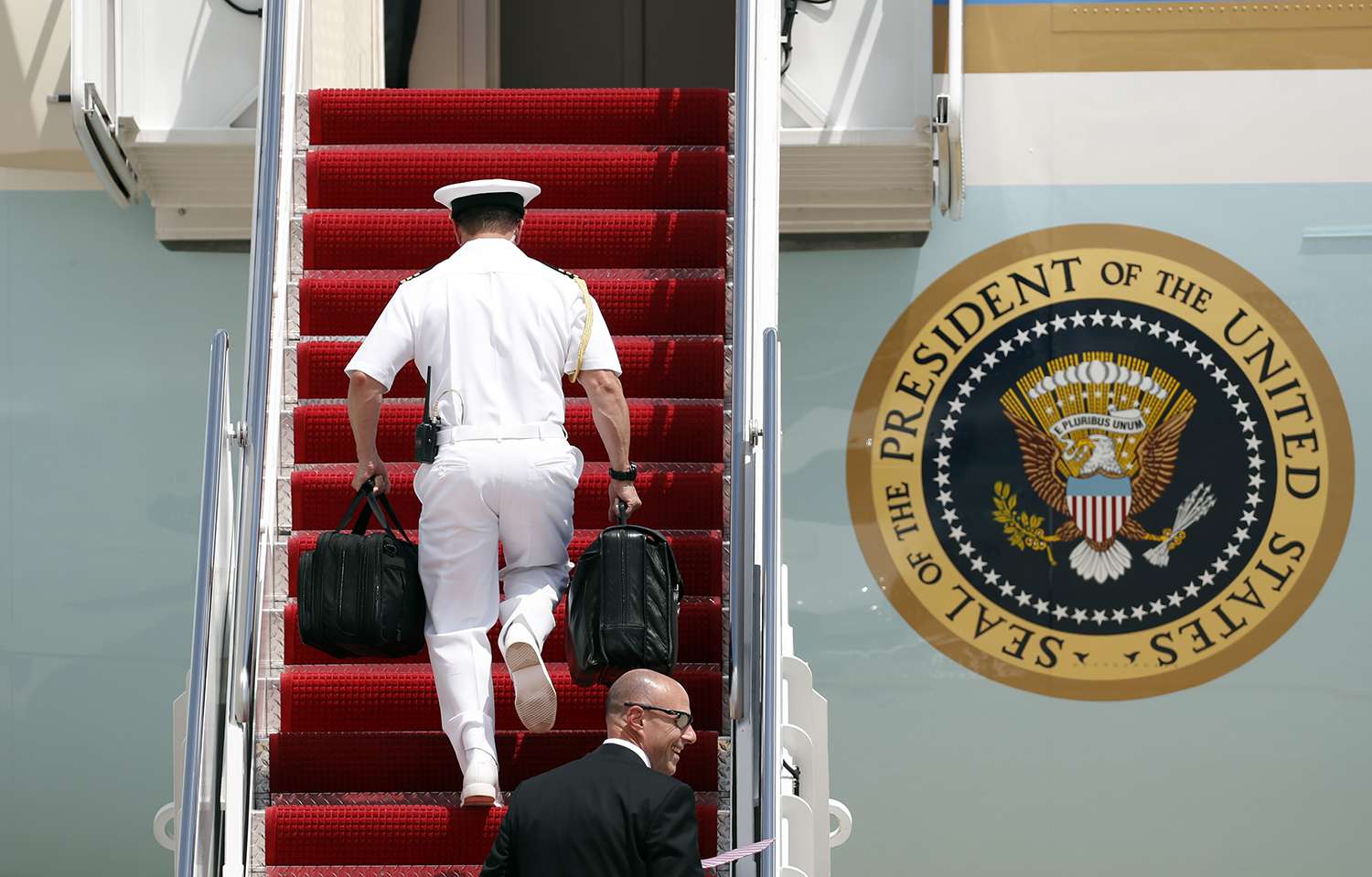
AP
The nuclear football is rarely more than a matter of steps away from the President or the Vice President. Here a Navy officer carries the case aboard Air Force One before departing on President's Trump's nine day international trip.
What prompted you to write this book? It is pretty apparent that putting it together was one hell of an undertaking.
Yeah, it was. It was about four years of research which is longer than I was anticipating. The short answer is, you know, I bumped up against these programs a lot in Washington. I'm sure you have too writing and reporting on these things. You talk to people who have been to these facilities. You would talk to people who would have been, of were evacuated to some of these facilities on 9/11. And then what sort of really got me interested in the topic was when one of my colleagues found a government ID on the floor of a parking garage here that he brought in to me to turnover—to give to me to give back to the guy, figuring that since I reported on the stuff, I would know how to get it back to him.
When I turned the ID over, it had these detailed evacuation instructions on the back. And so I got on Google Maps and Google Satellite, and followed those instructions, which were driving directions out into West Virginia. And discovered that they led to this road that disappeared into what were clearly concrete bunker doors in the side of a mountain. And it was an unmarked mountain that wasn't on any map. And no one nor I had ever heard of this facility. I was like, wow, this is part of the new post 9/11, you know, continuity government plans. And this is something that's probably worth looking into more.
What facility was that?
It was actually the facility that I talk about right at the end of the book, which is Allegany Ballistics Laboratory.
Did you try to get a tour of one of these facilities like Raven Rock or Mount Weather?
I couldn't get into Mount Weather or Raven Rock, but I did have the opportunity to tour NORAD, which is similar physically to the others, and a little bit more open. And then a lot of these facilities are also now tourist attractions of one sort or another. For instance, the Greenbrier congressional bunker in West Virginia, as well as some of these older retired bunkers like John F Kennedy's presidential escape bunker in Palm Beach, Florida, out on Peanut Island, actually just across the harbor from Trumps house at Mar-a-Lago. And when you get into that one, you definitely realize that it is not a place you would have wanted to have spent a nuclear war.
A huge thanks to Garrett Graff for taking the time to talk to us (he worked us in around CNN!). I will be posting a formal review on Raven Rock soon as well.
http://www.thedrive.com/the-war-zon...our-government-plans-for-its-own-annihilation
